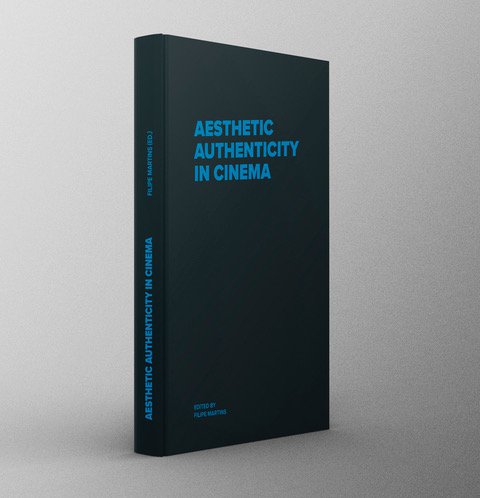Book Release
AESTHETIC AUTHENTICITY IN CINEMA
EDITADO POR FILIPE MARTINS
AUTHORS:
CHRISTA BLUMLINGER
DAVID LAROCCA
FERNANDO JOSÉ PEREIRA
FILIPE MARTINS
HUMBERTO MARTINS
MARIA AUGUSTA BABO
PAULA RABINOWITZ
PETER FREUND
SÉRGIO DIAS BRANCO
SUSANA NASCIMENTO DUARTE
BOOK RELEASE + ROUND TABLE
20 OCT 15H00 BATALHA CENTRO DE CINEMA BAR-1 45’
The book release will include a round table with the presence of some of the authors that integrate the book, for a informal discussion open to public participation.
SUMMARY
From very early on, realism has been one of the great guiding pillars of cinematographic theory, alongside with formalism The realistic character of cinema is a commonplace that is based, from the outset, on the very technical nature of the device. However, beyond this basic premise, we can identify very different approaches to realism in cinema – or, if we prefer, different realisms. The same cinematographic work can be read in the light of the epistemological or testimonial accuracy of its content, the mimetic fidelity (verisimilitude), the correspondence with the sensitive and immanent truth of its images (for instance in the Deleuzian sense), the semantic literality, the ethical relevance, the ability to produce poetic or performative effects of authenticity, etc. There are more naive versions of realism – which relate directly to the literal, the natural or the factual – and there are less naive realisms that accept the inevitability of performance and artifice, even though, at the same time, they also seek to preserve, or even intensify, some form of truth or authenticity. For instance, this is what Werner Herzog proposes when he highlights the subjectivity and poetic effort involved in cinema, including documentary cinema. In his words: “There are deeper layers of truth in cinema and there is a poetic and ecstatic truth. It is mysterious and elusive and can only be achieved through fabrication, imagination and stylization.”
All art seeks some kind of authenticity or “truth”. We can recognize it in fiction or documentary, in painting or photography, in the abstract or the figurative. Authenticity can be pointed out in the immediacy of the senses or in the honesty of a purely conceptual proposal; it can emanate from the aura of the singular object or prevail in the multiple and the ephemeral; it can relate to objective exteriority or appeal to a phenomenological interiority (or even install itself on the perceptive threshold between exterior and interior, as in Impressionism); It can be mimetic, the result of a technical effort of meticulous recreation, or, on the contrary, it can invest in the opposite of technique and structuring, praising the artist's chaos, randomness or passivity, so that the raw virginity of the real is not corrupted.
Authenticity appears to be involved in aesthetic fruition in different ways, forming one of the axiological pillars of the artistic field, regardless of the historical regime in which one addresses it. But art's implicit contract with authenticity is in stark contrast to the polysemy of the latter concept. How to describe this authenticity in its transversality to the most diverse forms of artistic expression? How does it operate in the process of validating the different poetics? How does it manifest itself throughout different historical regimes and what resists over the successive paradigmatic revolutions in the art world? What is the properly aesthetic authenticity?
(…)
All the chapters in this book resulted from an invitation addressed to international researchers in the fields of film studies, aesthetics and anthropology, who were challenged to take part in a comprehensive discussion on the notion of aesthetic authenticity applied to cinema. The resulting contributions, as expected, are eclectic, but at the same time quite consensual in their lines of research, as well as in the pointed conclusions.
Through the set of original texts gathered in this book, the aim is to highlight and measure the weight that the notion of aesthetic authenticity continues to have in the realm of cinema and in the arts in general, influencing the poetic orientations in artistic creation, as well as the demands of the audiences, critics, programmers, and other decision-makers concerned with the aesthetic value of cinema.
(From the book Introduction)
PUBLISHER: FACULDADE DE LETRAS DA UNIVERSIDADE DO PORTO (FLUP)
COLLECTION: ESTÉTICA, POLÍTICA E ARTES
COORDINATORS OF THE COLLECTION: EUGÉNIA VILELA E NÉ BARROS
